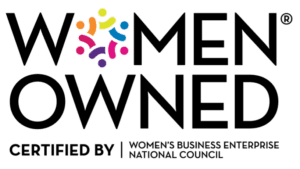In the journey towards creating more equitable and inclusive workplaces, Diversity, Equity, and Inclusion (DEI) have taken center stage. Organizations worldwide are recognizing the value of diverse perspectives, experiences, and backgrounds. DEI strives to dismantle barriers and promote fairness across boundaries of gender, race, and sexual orientation.
While these conversations are essential, disability inclusion remains an often-overlooked facet of the DEI dialogue, despite its immense significance. This article by Inclusive Communication Services (ICS) explores the critical role of disability inclusion in DEI efforts, its benefits, and actionable steps for creating a truly inclusive workplace.
The Often Overlooked Aspect: Disability Inclusion
It’s a paradox that while individuals with disabilities make up a substantial proportion of the global population, their unique experiences and contributions often receive minimal attention.
Statistics reveal the importance of disability inclusion. According to the World Health Organization (WHO), over one billion people worldwide have a disability, comprising about 15% of the global population. Yet, many workplaces fail to consider the unique accommodations and perspectives of this significant demographic. The “We The 15” campaign is a global movement aimed at increasing awareness and understanding of disability inclusion, emphasizing that disability isn’t a niche concern but a shared experience.
Benefits of Disability Inclusion
Embracing disability inclusion offers numerous advantages for organizations:
1. Access to Talent: By creating an inclusive environment, businesses tap into a vast pool of talented individuals who bring diverse skills and perspectives.
2. Increased Innovation and Creativity: Diverse teams foster innovation, problem-solving, and creative thinking, leading to better business outcomes.
3. Elevated Engagement and Retention: Inclusive workplaces enhance employee engagement and job satisfaction, reducing turnover and increasing overall productivity.
4. Amplified Reputation: Organizations committed to disability inclusion improve their reputation among employees, customers, and stakeholders, showcasing their dedication to social responsibility.
Steps to Create an Inclusive Workplace
Creating an inclusive workplace involves strategic actions:
1. Leadership Commitment: Leaders must champion disability inclusion, incorporating it into the company’s policies, values, and practices.
2. Remove Recruitment Obstacles: Revise recruitment processes to accommodate individuals with disabilities, ensuring equal access to opportunities.
3. Equal Access for All: Promote equal career advancement, training, and development opportunities regardless of ability.
4. Enhance Accessibility: Conduct an accessibility audit to identify and address physical and digital barriers within the workplace.
5. Disability Awareness Trainings: Educate employees about disability awareness to foster a more inclusive and empathetic work culture.
Where to Begin? Accessible Communication Strategy
Starting the pursuit of disability inclusion within your DEI endeavors can feel daunting. To navigate this path effectively, ICS recommends that you prioritize media accessibility, especially in frequently used formats like training videos. A pivotal aspect of fostering disability inclusion is ensuring that all forms of communication are readily and permanently accessible.
For guidance, your DEI and HR departments can consult with Inclusive Communication Services (ICS). We offer Accessible Media Services designed to provide equal access to information for Deaf, Deafblind, and Hard-of-Hearing (HOH) individuals.
- Adding Captions (CC) and (OC): With 5% of the global population (430 million people) experiencing hearing loss and 75% of viewers watching videos without sound, captions have become essential. They ensure inclusivity and engagement.
- Providing Audio Descriptions (AD): Empower those with Low Vision and Blindness through audio descriptions. These narrate visual elements, actions, expressions, and crucial details, enabling comprehensive understanding.
- Incorporating Sign Language Translation: Break down communication barriers by integrating a sign language translator directly into your video stream. An inset window offers a preferred language option for Deaf or Hard-of-Hearing viewers, ensuring a genuinely accessible viewing experience.
Let ICS help you take the initial steps toward accessibility! Recognizing and addressing the impact of disability in the broader DEI narrative is paramount to fostering true inclusivity. As you embark on this transformative journey, remember that the path to an accessible future is navigated through continuous commitment, collaboration, and compassion.
Schedule Your Free Consultation with ICS





